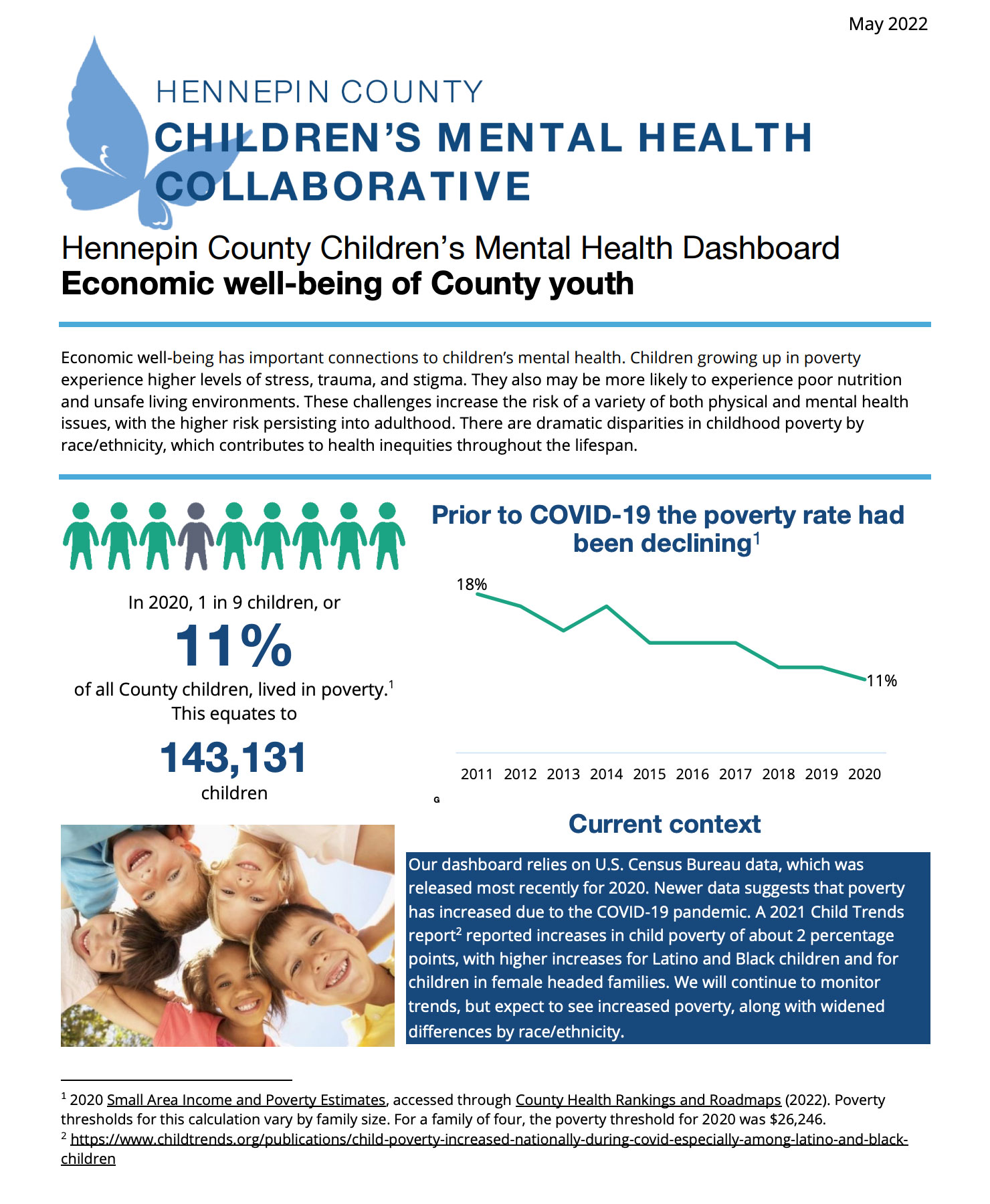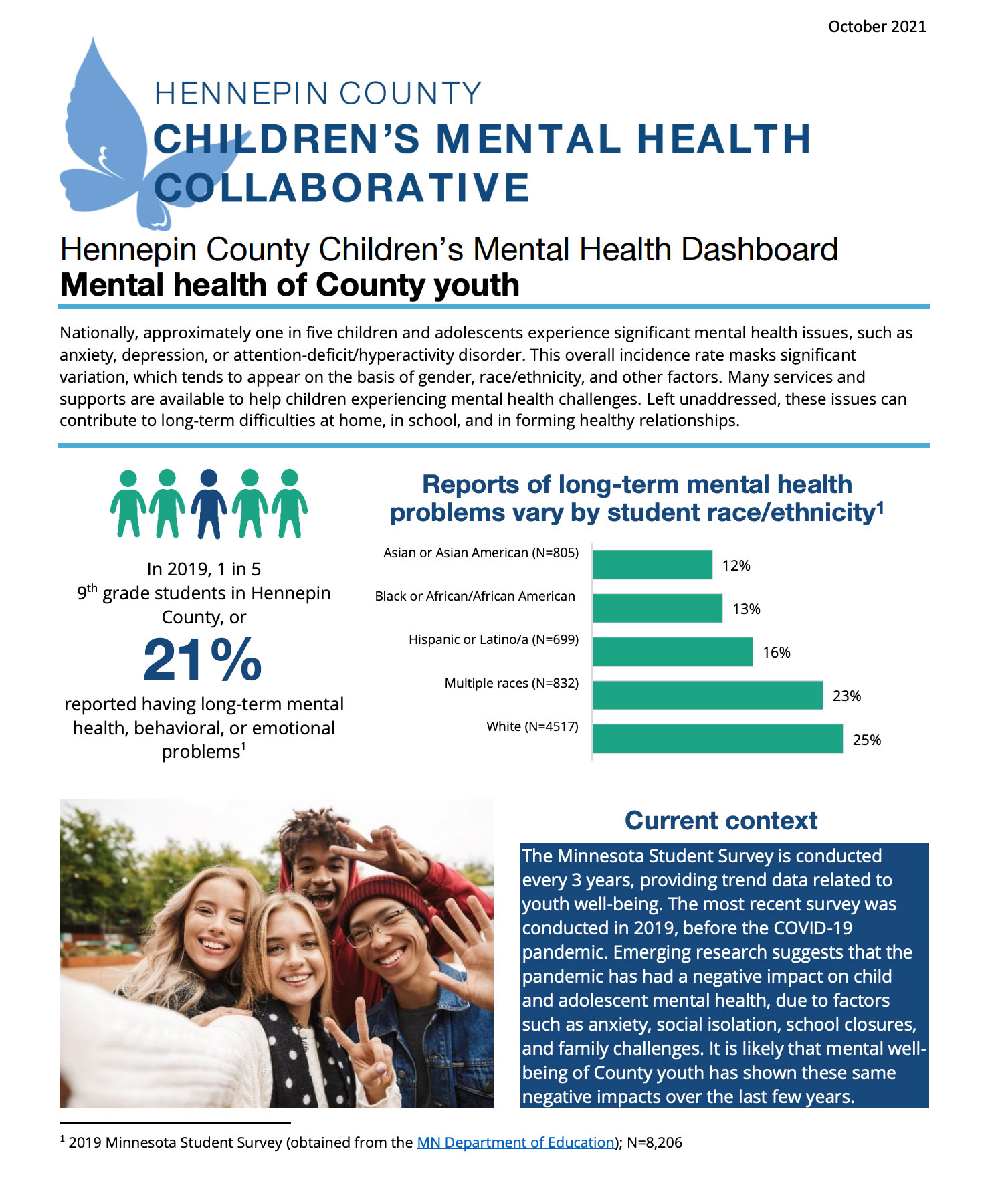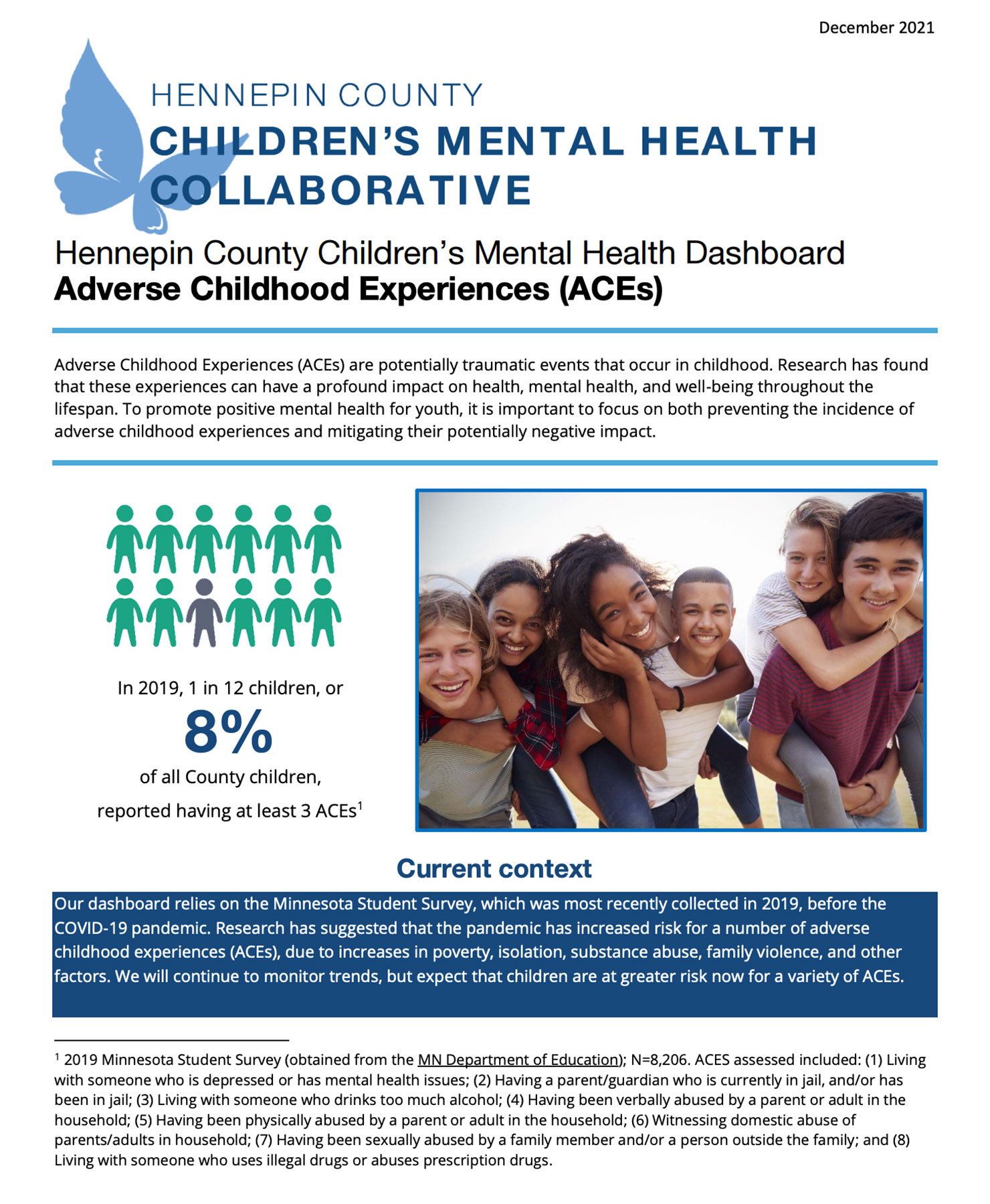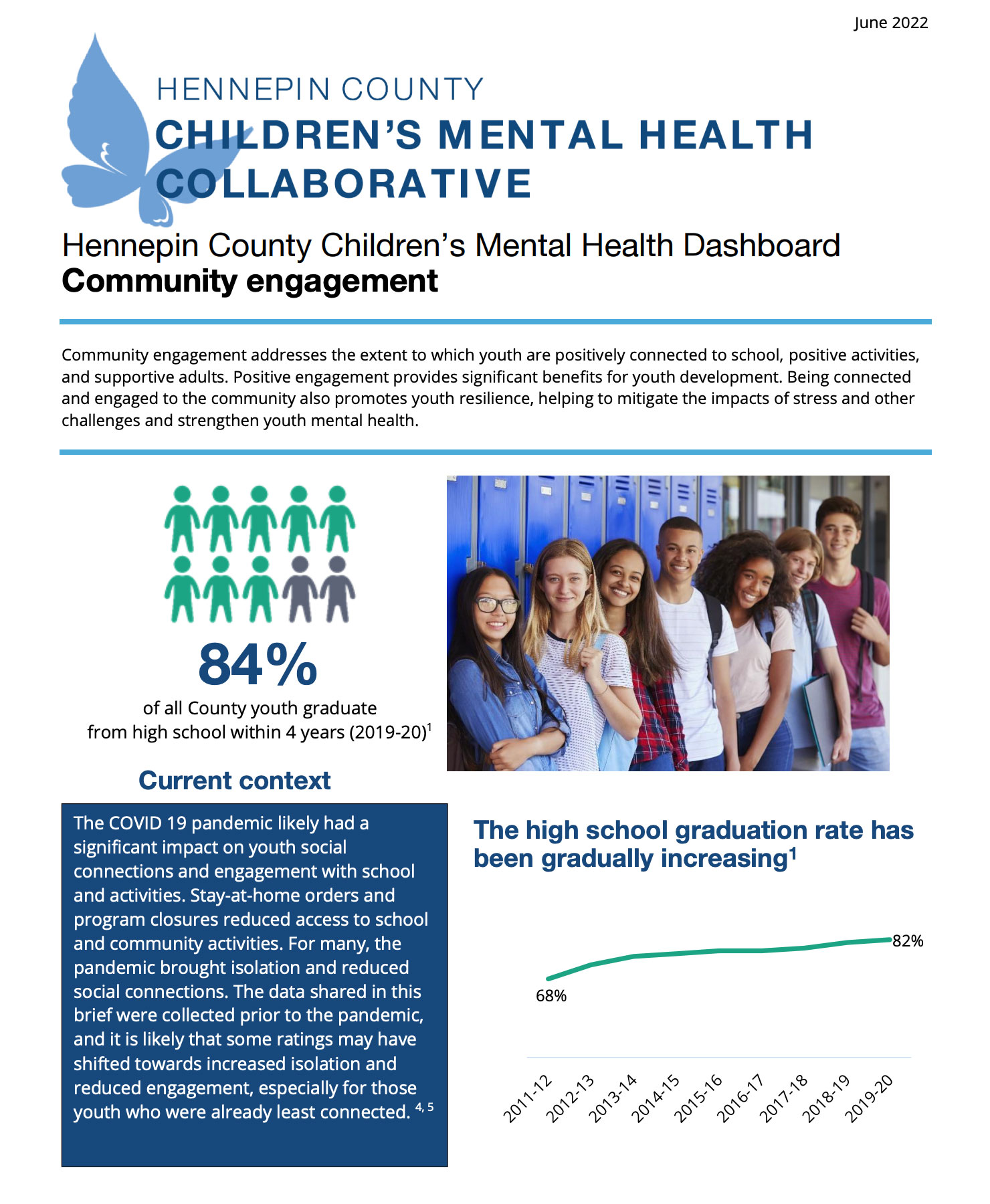As part of our goal to strategically use data, we have compiled a dashboard of existing data about the mental health and well-being of County children and families. The dashboard relies primarily on data that is publicly available, drawing on a variety of local, state, and national data sources. The information is intended to provide a snapshot of available data, for use in monitoring trends and informing service and system reform efforts. In addition to presenting key data, each summary includes recommended resources for learning more about the topic and some questions, designed to encourage reflection regarding the findings and strategies that can be used to take action in the community.
A complete list of all dashboard indicators can be found here. The dashboard indicators have been divided into the following series of topic briefs:





